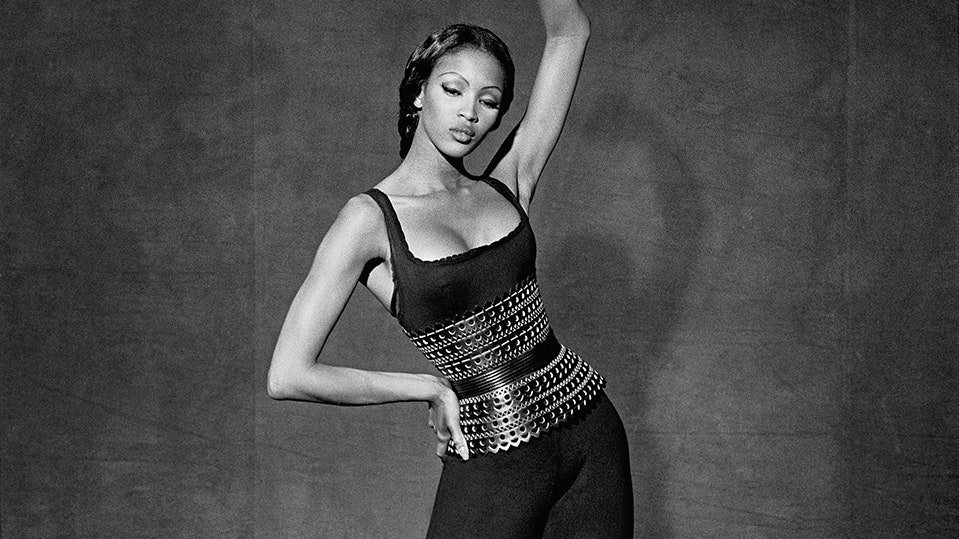Both were creatives attentive to structure, sensuality and monochromatic palettes. As Saillard writes, Alaïa was “an architect of bodies… [who] brought out women’s figures, forming a silhouette that he draped, molded, or revealed with a cutting technique that he alone mastered.”
And Lindbergh “ennobled his subjects by lighting up their souls and personalities with the precision of the contours that he cut like a tailor.” Each helped to shape the visual culture of the 1980s and then “in unison, were the great, passionate artisans of those unadorned faces that marked the 1990s and consecrated the age of the supermodels.”
Tatjana Patitz, Le Touquet, 1986
Peter Lindbergh Foundation ParisTheir joint contribution is illustrated beautifully in this book. The focus is purely on garment and character, all the photos shot in black and white. Women linger in abandoned buildings, drape themselves across tiled floors, pose in spotlights, and pause mid-conversation, cigarette in hand. Anna Cleveland loiters on a dimly lit street in a caped coat. Naomi Campbell stands with one hand on her hip, the other raised, her figure sinuous in a tight bodysuit and her stance one of absolute power.
Marie-Sophie Wilson, Paris, 1988
Peter Lindbergh Foundation ParisThere is a dynamism and quietly executed drama to these pictures: all of them deeply textured, defined by line, and driven by a synthesis between skin, fabric, and light. They feature faces that are not only unadorned but unforgettable, and showcase clothes at their most transformative. “I have always wanted women to feel free,” Alaïa said. Within these pages, freedom features strongly, present in both motion and stillness, embodied in a quest for authenticity of design and image-making that enabled an extraordinary creative kinship.
Azzedine Alaïa, Peter Lindbergh (Taschen) is out May 14, 2021
